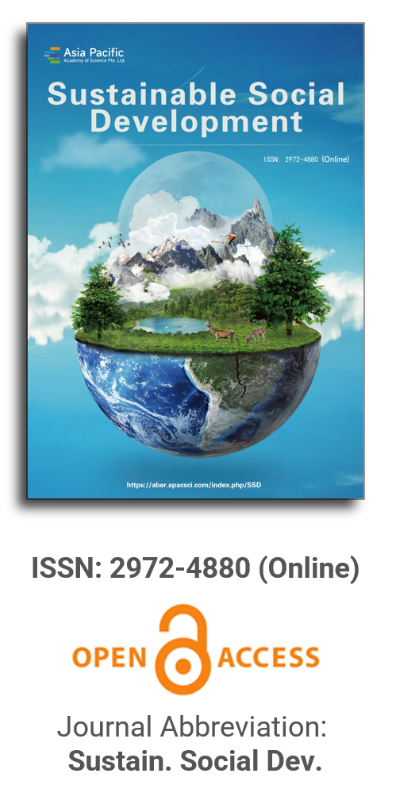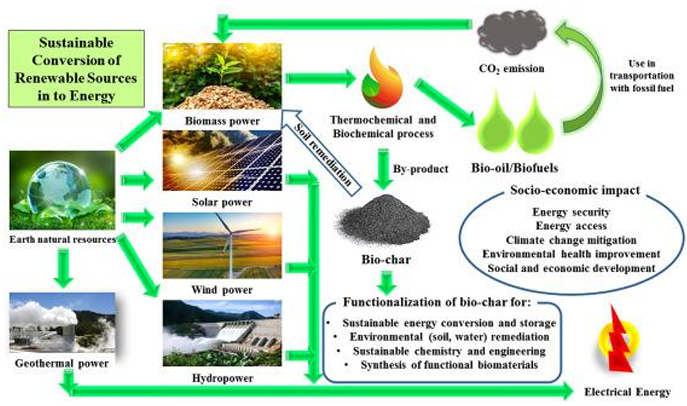
Asia Pacific Academy of Science Pte. Ltd. (APACSCI) specializes in international journal publishing. APACSCI adopts the open access publishing model and provides an important communication bridge for academic groups whose interest fields include engineering, technology, medicine, computer, mathematics, agriculture and forestry, and environment.

FIKR (Facet, Insight, Knowledge, and Resilience) personality profile for employee development: Literature emphasizes personality characteristic evaluation
Vol 2, Issue 3, 2024
Download PDF
Abstract
This short note aims to review all the available literature using the keywords ‘Employee Development’ in the Scopus database and identify the personality traits that are supported by the FIKR (Facet, Insight, Knowledge, and Resilience) personality profiling assessment. Our research on 21 May 2024 involved a comprehensive search using the Scopus database and the keywords ‘Employee Development’ in the article title. We meticulously analyzed the bibliometric data using VOSviewer, a tool that generates clear graphical representations of bibliometric maps, to ensure the comprehensiveness and accuracy of our findings. This rigorous approach enhances the credibility of our research. A total of 1366 papers were reached using the Scopus database search, which had high relevancy. Based on the visualization of the paper network confirming the main research themes, from 1932 to 2024, there were 115 items, separating into six clusters. In the first cluster, ‘Knowledge Management’ was found. Interestingly, the only personality trait highlighted was ‘self-concept’ in the second cluster. Therefore, the present study highlights knowledge as an important FIKR personality profiling assessment. At the same time, ‘self-conceptual,’ one of the 20 PTs in the Humanology FIKR personality profiling inventory, is well-supported in the literature on employee development in an organization. The literature review provides a rationale for supporting and highlighting the use of knowledge and self-conceptual traits, among other things, under the FIKR personality profiling assessment in an organization’s employee development.
Keywords
References
- Damman S. Where Is Your ‘F’? Psychological Testing, Communication and Identity Formation in a Multinational Corporation. Anthropology in Action. 2012; 19(1). doi: 10.3167/aia.2012.190106
- Jaeger A. Achieving business excellence through self-assessment for personal and professional excellence. Total Quality Management & Business Excellence. 2017; 29(13-14): 1612-1632. doi: 10.1080/14783363.2017.1288564
- Romaniuk K, Snart F. Enhancing employability: the role of prior learning assessment and portfolios. Journal of Workplace Learning. 2000; 12(1): 29-34. doi: 10.1108/13665620010309774
- Humanology. Humanology Sdn Bhd. Available online: https://hba.com.my/ (accessed on 25 May 2024).
- Caldwell C, Beverage MS, Converse PD. Selecting for Flair Factors: Improving the Selection Process. Business and Management Research. 2018; 7(1): 1. doi: 10.5430/bmr.v7n1p1
- Cattell HEP, Mead AD. The Sixteen Personality Factor Questionnaire (16PF). Available online: https://doi.org/10.4135/9781849200479.n7 (accessed on 25 May 2024).
- Furnham A. Personality Assessment: Overview. In: Wright JD (editor). International Encyclopedia of the Social & Behavioral Sciences, 2nd ed. Elsevier; 2015. pp. 849-856. doi: 10.1016/b978-0-08-097086-8.25027-7
- Helens-Hart R. The Employability Self-Assessment: Identifying and Appraising Career Identity, Personal Adaptability, and Social and Human Capital. Management Teaching Review. 2018; 4(1): 6-13. doi: 10.1177/2379298118775937
- Kessler R. Collaborate with employees to make your competency‐based systems stronger. Employment Relations Today. 2004; 31(3): 27-32. doi: 10.1002/ert.20027
- Ellegaard O, Wallin JA. The bibliometric analysis of scholarly production: How great is the impact? Scientometrics. 2015; 105(3): 1809-1831. doi: 10.1007/s11192-015-1645-z
- van Eck NJ, Waltman L. Software survey: VOSviewer, a computer program for bibliometric mapping. Scientometrics. 2009; 84(2): 523-538. doi: 10.1007/s11192-009-0146-3
- Guz AN, Rushchitsky JJ. Scopus: A system for the evaluation of scientific journals. International Applied Mechanics. 2009; 45(4): 351-362. doi: 10.1007/s10778-009-0189-4
- Nazari K, Emami M. Knowledge Management: From Theory to Practice. Australian Journal of Business and Management Research. 2012; 01(11): 22-30. doi: 10.52283/nswrca.ajbmr.20120111a03
- Amar AD, Juneja JA. A descriptive model of innovation and creativity in organizations: a synthesis of research and practice. Knowledge Management Research & Practice. 2008; 6(4): 298-311. doi: 10.1057/kmrp.2008.18
- Shaher ATQ, Ali KAM. The effect of entrepreneurial orientation and knowledge management on innovation performance: The mediation role of market orientation. Management Science Letters. 2020; 10(15): 3723–3734. doi: 10.5267/j.msl.2020.6.020
- Syech S, Anisah A, Sari AP. Employee Performance Model based on Knowledge Management and Employee Retention. J-MAS (Jurnal Manajemen dan Sains). 2023; 7(2): 1391. doi: 10.33087/jmas.v7i2.983
- Shek DTL, Zhu X, Dou D, et al. Self-leadership as an attribute of service leadership: Its relationship to well-being among university students in Hong Kong. Frontiers in Psychology. 2023; 14. doi: 10.3389/fpsyg.2023.1088154
- Andersen JA. Leadership, personality and effectiveness. The Journal of Socio-Economics. 2006; 35(6): 1078-1091. doi: 10.1016/j.socec.2005.11.066
- Kirkpatick SA, Locke EA. Leadership: do traits matter? Academy of Management Perspectives. 1991; 5(2): 48-60. doi: 10.5465/ame.1991.4274679
- Suhartono S. Leadership Communication Style in Improving Public Service Performance (A Case Study of the village office of Camba Berua). International Journal of Advanced Engineering, Management and Science. 2020; 6(6): 267-274. doi: 10.22161/ijaems.66.7
- Day DV, Dragoni L. Leadership Development: An Outcome-Oriented Review Based on Time and Levels of Analyses. Annual Review of Organizational Psychology and Organizational Behavior. 2015; 2(1): 133-156. doi: 10.1146/annurev-orgpsych-032414-111328
- Rubens A, Schoenfeld GA, Schaffer BS, et al. Self-awareness and leadership: Developing an individual strategic professional development plan in an MBA leadership course. The International Journal of Management Education. 2018; 16(1): 1-13. doi: 10.1016/j.ijme.2017.11.001
- Judge TA, Bono JE, Ilies R, et al. Personality and leadership: A qualitative and quantitative review. Journal of Applied Psychology. 2002; 87(4): 765-780. doi: 10.1037/0021-9010.87.4.765
- Hogan R, Kaiser RB. What we know about Leadership. Review of General Psychology. 2005; 9(2): 169-180. doi: 10.1037/1089-2680.9.2.169
- Epitropaki O, Kark R, Mainemelis C, et al. Leadership and followership identity processes: A multilevel review. The Leadership Quarterly. 2017; 28(1): 104-129. doi: 10.1016/j.leaqua.2016.10.003
- Ullah I, Wisetsri W, Wu H, et al. Leadership Styles and Organizational Citizenship Behavior for the Environment: The Mediating Role of Self-Efficacy and Psychological Ownership. Frontiers in Psychology. 2021; 12. doi: 10.3389/fpsyg.2021.683101
- Williams S. Personality and self-leadership. Human Resource Management Review. 1997; 7(2): 139-155.
- Sosik JJ. Self-concept based aspects of the charismatic leader: More than meets the eye. The Leadership Quarterly. 1998; 9(4): 503-526.
- Lord RG, Brown DJ, Freiberg SJ. Understanding the Dynamics of Leadership: The Role of Follower Self-Concepts in the Leader/Follower Relationship. Organizational Behavior and Human Decision Processes. 1999; 78(3): 167-203. doi: 10.1006/obhd.1999.2832
- Shamroukh MG, Kamel MK. Mechanisms for Knowledge Management and Achieving Organizational Development of Higher Education Institutions from a Community Organization Perspective. College of Social Work Social Studies and Research Journal. 2021; 22(1): 15-52. doi: 10.21608/jfss.2021.135273
- Aydogmus C, Metin Camgoz S, Ergeneli A, et al. Perceptions of transformational leadership and job satisfaction: The roles of personality traits and psychological empowerment. Journal of Management & Organization. 2016; 24(1): 81-107. doi: 10.1017/jmo.2016.59
- Hill NC, Ritchie JB. The Effect of Self-Esteem on Leadership and Achievement: A Paradigm and a Review. Group & Organization Studies. 1977; 2(4): 491-503. doi: 10.1177/105960117700200410
- Marsh HW, Seaton M, Dicke T, et al. The centrality of academic self-concept to motivation and learning. In: The Cambridge Handbook of Motivation and Learning. Cambridge University Press; 2019.
- Shi P, Lu X, Zhou Y, et al. Online Star vs. Celebrity Endorsements: The Role of Self-Concept and Advertising Appeal in Influencing Purchase Intention. Frontiers in Psychology. 2021; 12. doi: 10.3389/fpsyg.2021.736883
- Hott L, Sonstegard M. Relating Self-Conception to Curriculum Development. The Journal of Educational Research. 1965; 58(8): 348-351. doi: 10.1080/00220671.1965.10883241
- Haraldsdottir RK, Gunnlaugsdottir J. The missing link in information and records management: personal knowledge registration. Records Management Journal. 2018; 28(1): 79-98. doi: 10.1108/rmj-05-2017-0013
Supporting Agencies
Copyright (c) 2024 Chee Kong Yap, Chee Seng Leow, Wing Sum Vincent Leong
License URL: https://creativecommons.org/licenses/by/4.0/

This site is licensed under a Creative Commons Attribution 4.0 International License (CC BY 4.0).

Prof. Kittisak Jermsittiparsert
University of City Island, Cyprus






It is with deep regret that we announce the cancellation of the Forum on Sustainable Social Development & Computing and Artificial Intelligence, originally scheduled for June 15, 2025.

